See exactly how the new TrueTone tung oil stains will look on your next woodworking project.
After partnering with Waterlox on our new dining table build, I fell in love with their newest product. The TrueTone color-infused tung oil is a wonderful buff-in stain for wood.
So I am super excited to be partnering with Waterlox again to do a fun test. I am sampling all 11 colors of their TrueTone system on 6 different wood species.
This will help you see the true color the stains give the different colors and types of wood so you can pick the perfect finish for your next project!
This post may contain affiliate links. As an Amazon Associate I earn from qualifying purchases. Click here to read my full disclosure policy.
What is the TrueTone Tung Oil Finish?
TrueTone is a Tung oil finish that is buffed-in. It provides a matte, unfinished wood look while still offering water-resistant protection.
The buff-in color is so easy to apply and can be followed up with any of the other Waterlox finishing systems, including a new TrueTone buff-in tung oil finish.
This TrueTone tung oil finish enhances the colors and grain in the wood without the shine or coating that traditional finishes have.
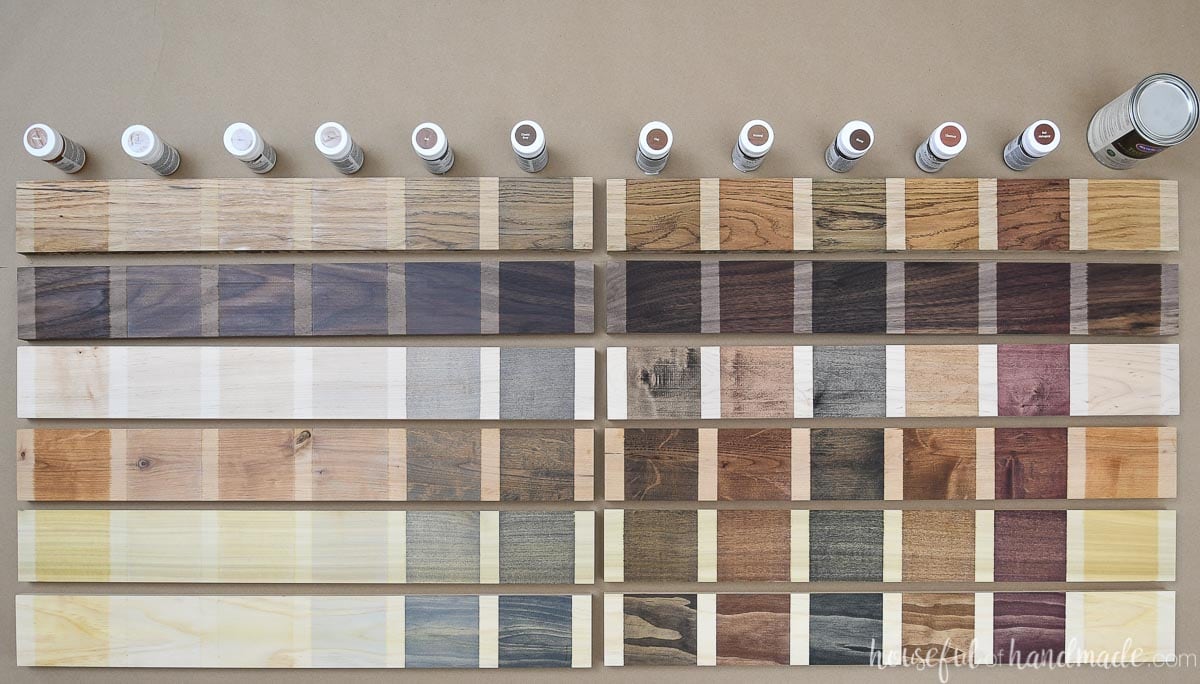
The finish on our dining room table is super soft and smooth. I love the feel of it. And the unfinished, matte finish is a great modern look. It’s my preferred look for furniture.
But not only do I love the finish and the protection of the Waterlox products, I also love that it is a woman owned business. And their products are all handcrafted in small batches in their Ohio facility in the USA.
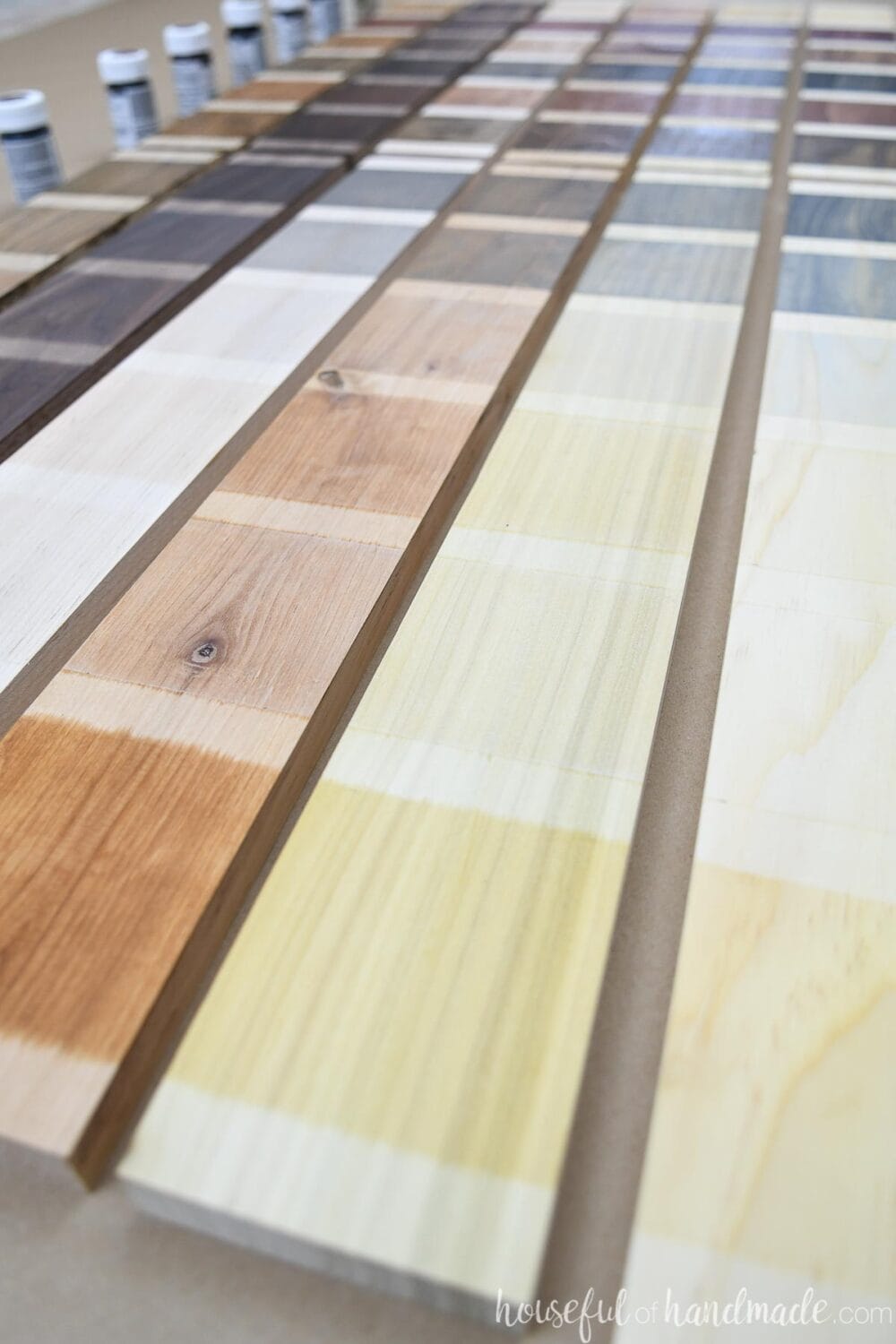
Testing the Colors on Different Wood Species
When you look at a swatch of wood stain online or in a store, it is hard to imagine what it will actually look like on your finished project. The swatch is only showing the way the color will look on one type of wood.
So I thought it would be fun to test all the TrueTone colors on a bunch of different wood species, each one with a different base color. That way I could see exactly how the stain would turn out on a finished build.

This project was very eye opening for me because I found some colors that I did not think I liked when I looked at them on the digital swatch. But absolutely love the way they look when applied to some of the species of wood.
And now I am excited to tackle my next woodworking project with some of my favorite wood/TrueTone color combinations!
I have created boards of the different colors both by wood species and by stain. That way you can see the difference in the way the colors look and the way the different species changed.
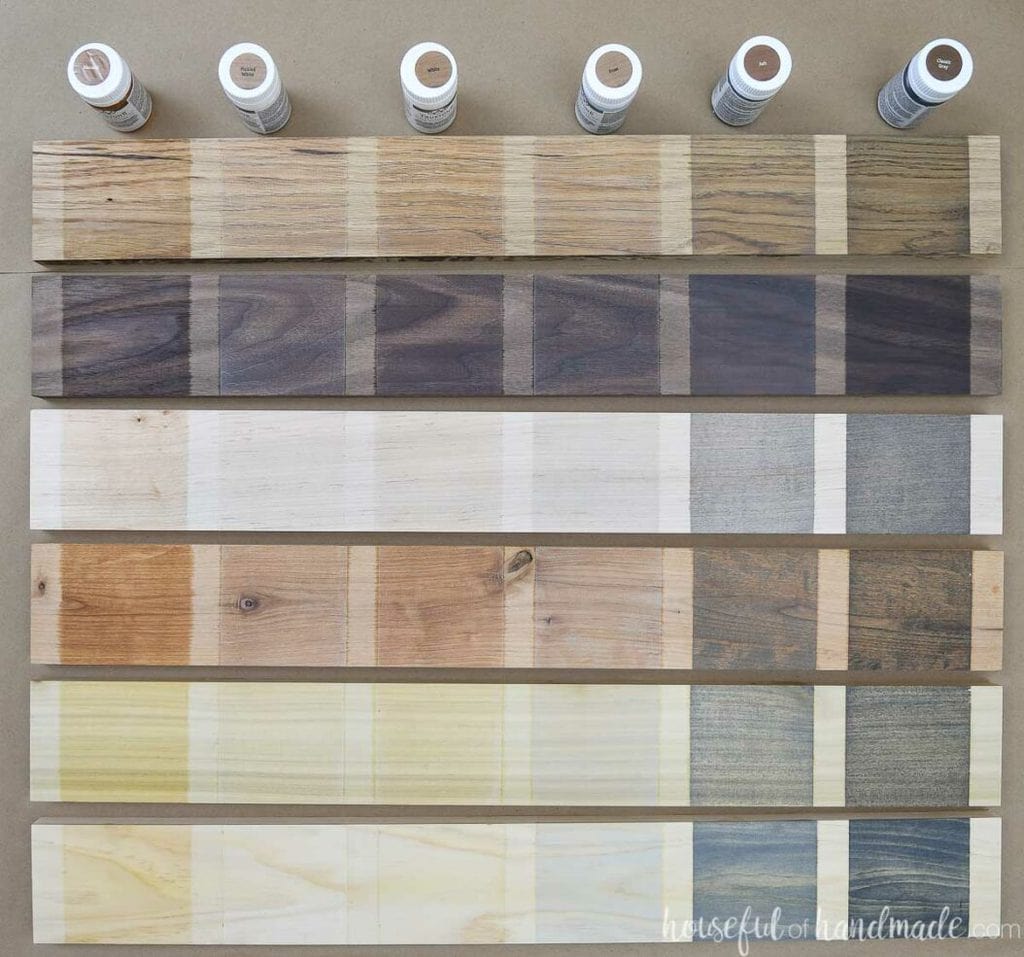
Prefer to Watch? Check out the Video Below
Looking at the Colors by Wood Species
Pine
I chose select pine boards from my local big box home improvement store for the pine. I love using these fancier pine boards in furniture builds.
Pine is a softer wood that is very easy to work with, so it is great for beginners or when you are trying out a new technique. Pine takes the TrueTone color very well and it really makes the grain pop.

Poplar
Poplar is one of my favorite inexpensive woods to use. It is considered a hard wood, but it is still relatively soft. That means it is easy to work with.
Poplar is a very pale wood that can have a green color cast to it. Some of the different TrueTone stains highlighted the green and others helped to hide it.
The more subtle grain pattern of poplar allows the stain to make it mimic more expensive wood species.

Alder
Alder is the wood I used on my dining room table build. It is another softer hard wood that is easier to work with.
You can find alder in two different classes: knotty or select. The knotty alder has more knots in it and the select is smoother boards. I love the look of the knots and the cheaper price tag of knotty alder.
Alder is sometimes referred to as the cheap man’s cherry because it has a warm red undertone. It took the TrueTone colors beautifully and made some beautiful colors.
However, I did notice the grays stains came out blotchy on the alder so I would not recommend them on this species.

Maple
Maple is my new obsession right now. I used it on my wood kitchen countertops. Maple is a pretty hard wood to work with and as a beginner I would recommend a small project for your first maple build.
You can find maple in a browner tone, typically called brown maple. I chose a light white maple to so the color would not be similar to other wood species in the test.
The darker TrueTone colors on the maple made the wood look exotic.
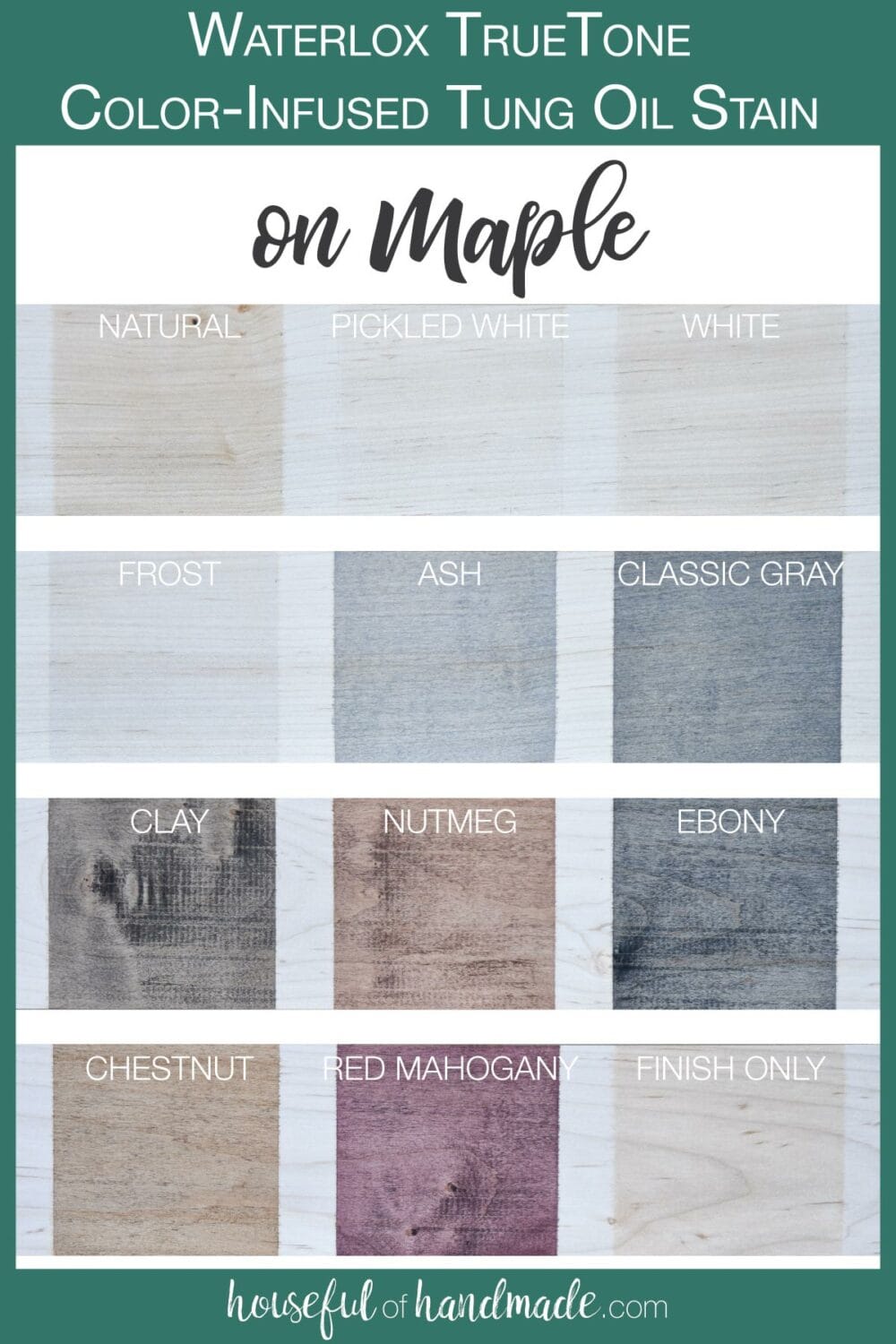
White Oak
White oak is another one of my new obsessions. I used it to build these DIY nightstands. But a word of caution, white oak is a very hard wood. I broke a few bits and had to be careful ripping boards on the table saw.
But once you get the hang of working with a very hard wood, white oak is so beautiful. You get a lot of character in the grain of the wood and that grain really soaked up the different colors.
I think I was most shocked about how much I loved some of the TrueTone colors I didn’t think I like on the white oak. The gray stains in the grain of the oak give it a very beautiful worn look.
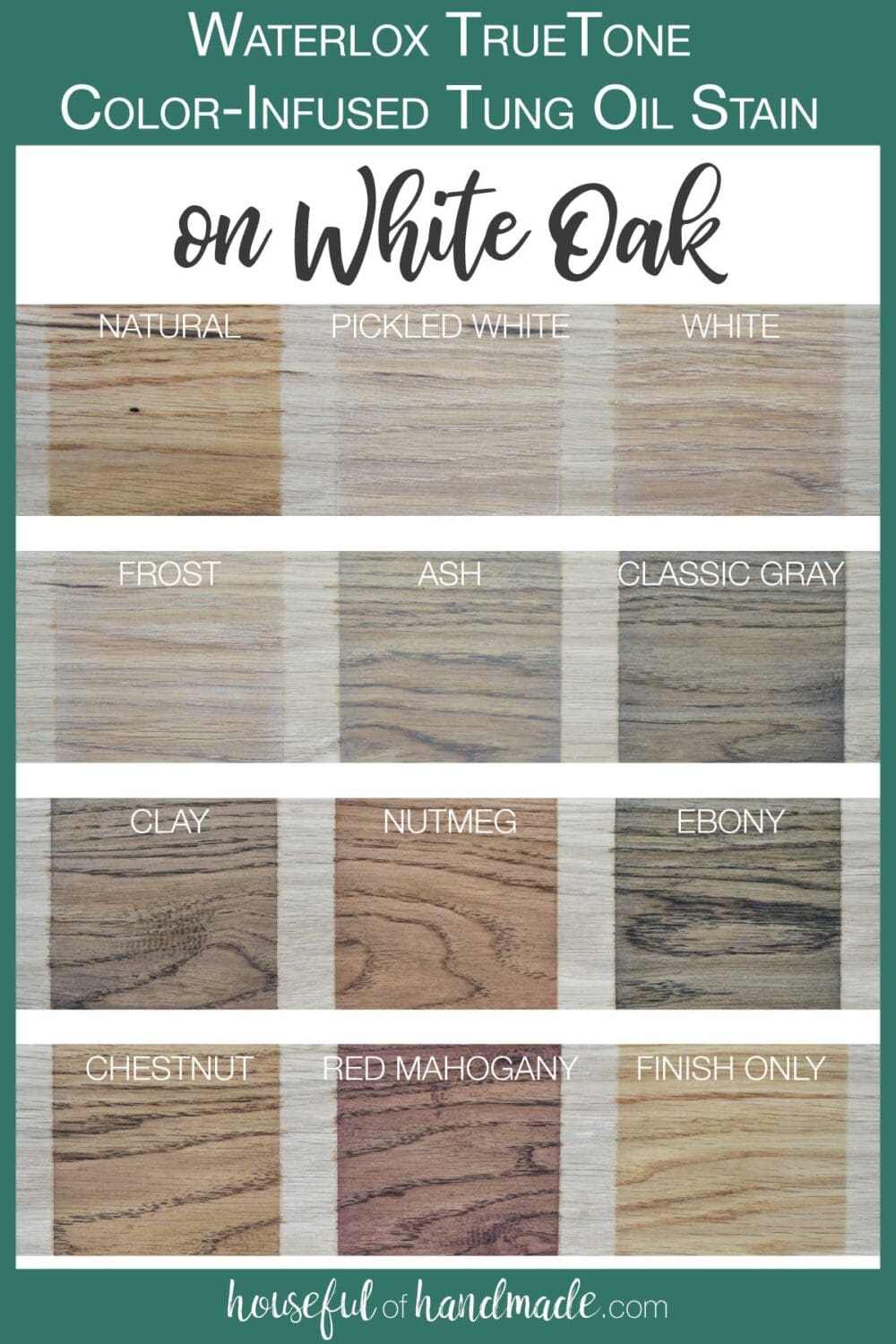
Walnut
I know, staining walnut is not something you normally think about. But I was very curious how this wood would be affected by the different colors.
Also if you use walnut as an accent on a piece of furniture, it would be good to know how a stain you are using on the other wood will look on it too.
And I learned that the TrueTone colors on the walnut were a great way to enhance different tones in the wood. The darker colors added richness to the walnut and the pickled white gave it an interesting bleached/lime washed look.
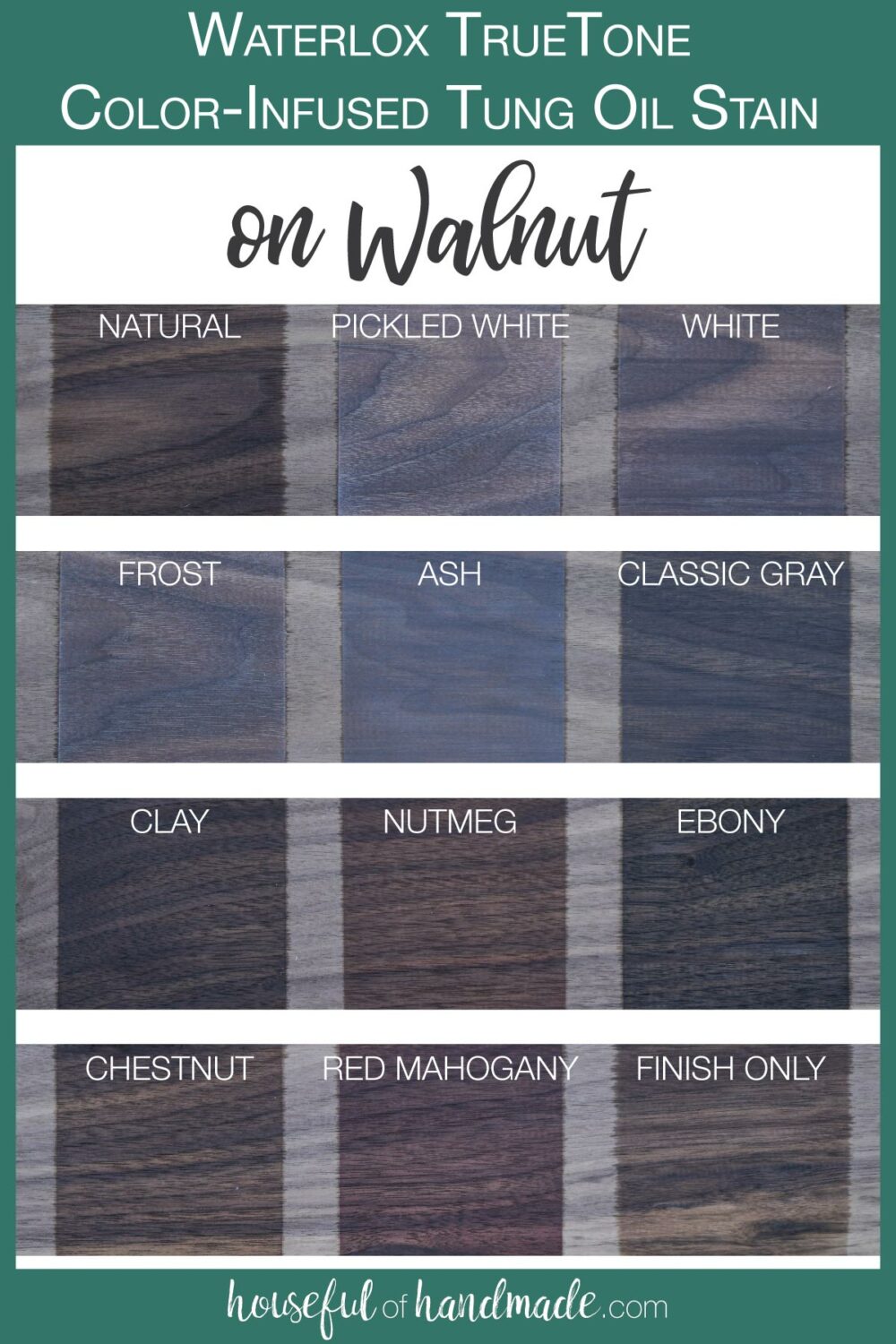
Looking at the Colors by TrueTone Finish
Natural
The Natural colored stain is used to highlight the color of the wood. Immediately upon buffing-it into the different wood species, you saw the natural colors pop.
It does add a warmth to the wood as it brings out the natural colors.

Pickled White
The Pickled white stain is a cool white. When buffing it into the wood, it filled the grain of the walnut and white oak giving the wood a lime washed look.
On the lighter colored woods, it gave the wood a totally raw look, almost like it was just sanded. There is no added warmth or depth to the wood, even after adding the TrueTone finish to it.
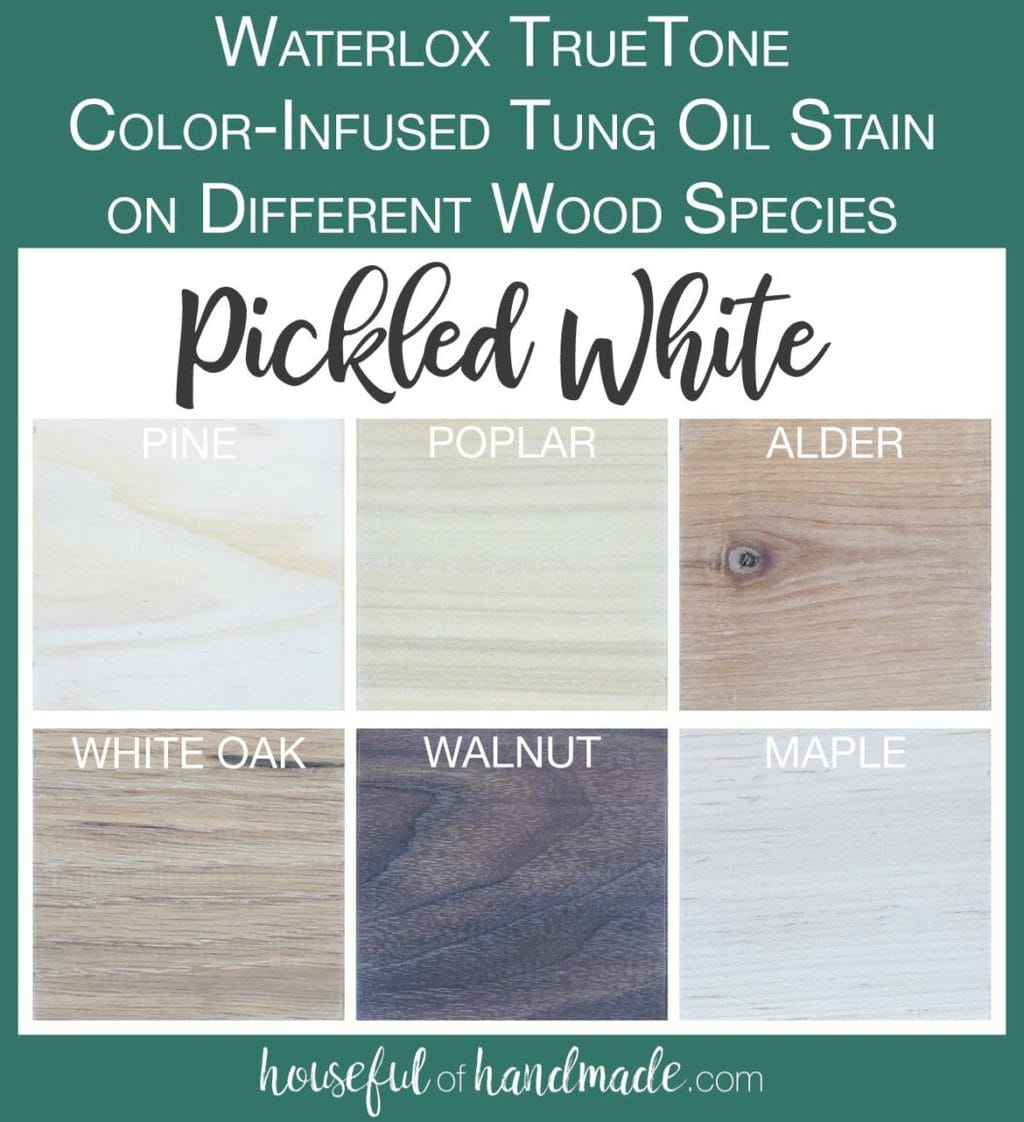
White
The White colored stain is a warm white. It did not add as much white to the wood as the Pickled White stain, and it had a little more warmth to it.
The stain gave the white oak and walnut the same lime washed look as the Pickled White, but more subtle. It also gave the same unfinished look to the lighter woods, but with a bit of warmth to it.
I used it to seal butcher block countertops with a matte, unfinished look and it worked amazingly!
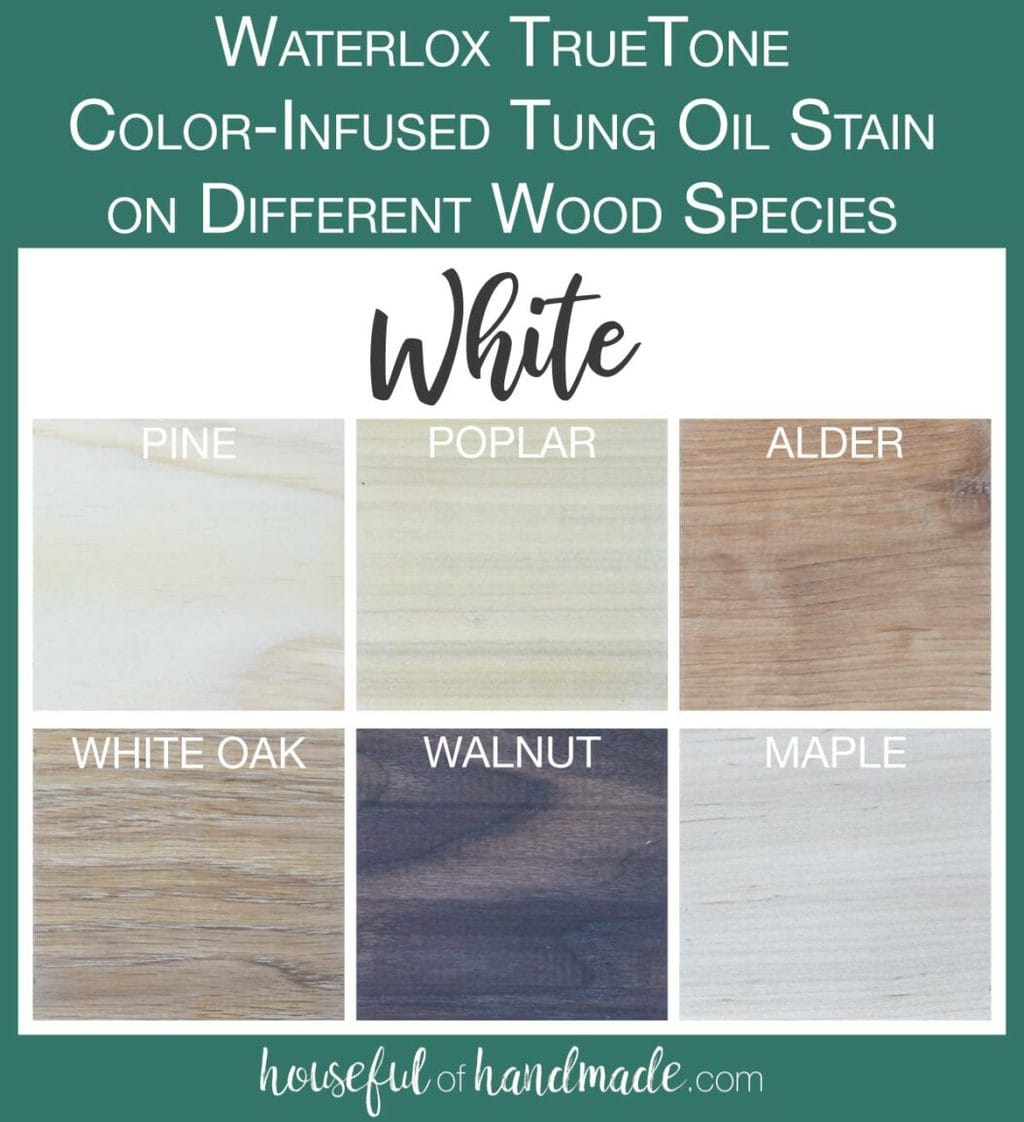
Frost
The Frost stain is a pale gray stain. The stain acted similarly to the White and Pickled white, but this time it added a gray hue to it.
On the lighter boards you can see a subtle gray/white tone to the wood. On the white oak and walnut, the grain is filled again but with a gray hue.

Ash
The Ash stain is a medium gray stain. It has a very cool tone to it. The lighter woods really show the medium gray well.
The white oak shows less gray on the top of the wood, but you definitely see the gray more in the grain.

Classic Gray
Classic gray is a dark gray stain. On the cooler wood species it has a slightly blue hue to the gray, but on the warmer woods, it is a true gray.
The classic gray on the white oak really surprised me with the depth of color in the grain.

Clay
The Clay stain is an ashy medium brown. It has a cool tone to it and removed the yellow tones from wood.
This was one that really surprised me. I was not drawn to the color based on the online swatch, but the Clay color on the warmer alder and white oak boards is a beautiful cool brown color.
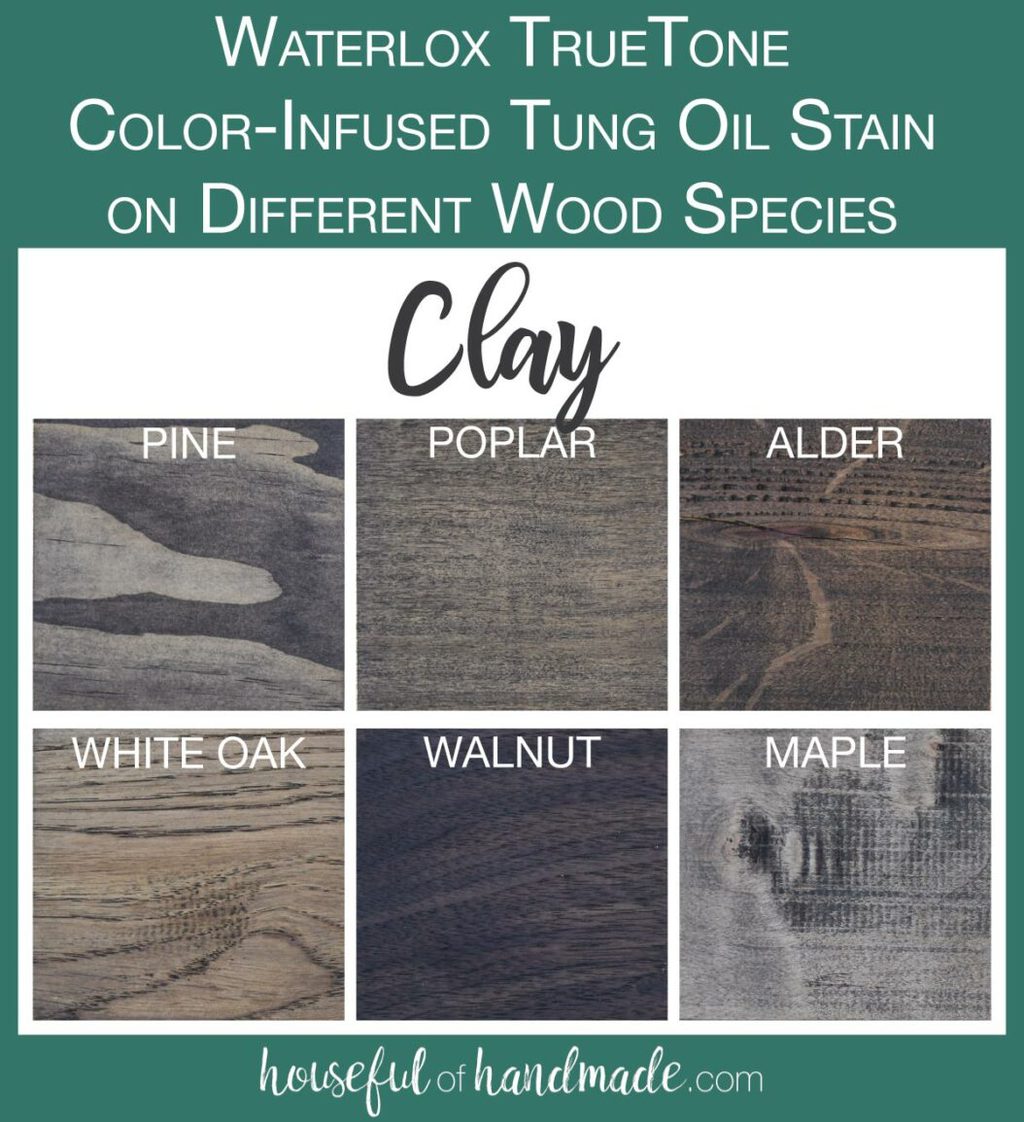
Nutmeg
Nutmeg is a medium brown with red tones to it. On the lighter boards, you get a hint of purple, but on the warmer brown wood it gives it a medium red tone.
The Nutmeg stain on the walnut board surprised me. I love the warmth and depth it aded to it.
The red tones also helped to balance out the green tones in the poplar board I had and made it a very pretty medium brown color.
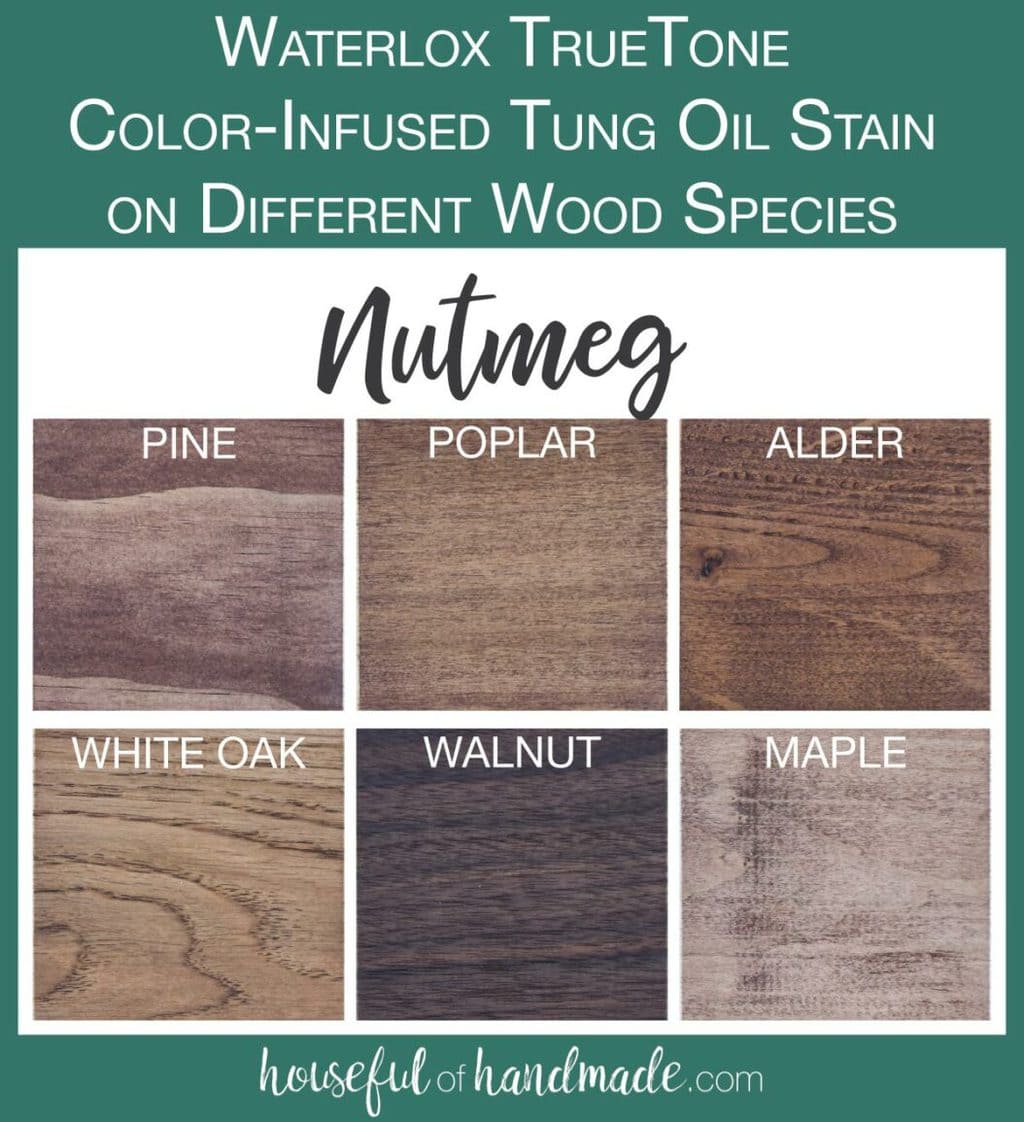
Chestnut
Chestnut is a cooler medium brown stain. This is the TrueTone color I used on our dining table build. It really enhanced the warmth of the alder.
It also hides the green in the poplar nicely and made the grain on the pine really rich.
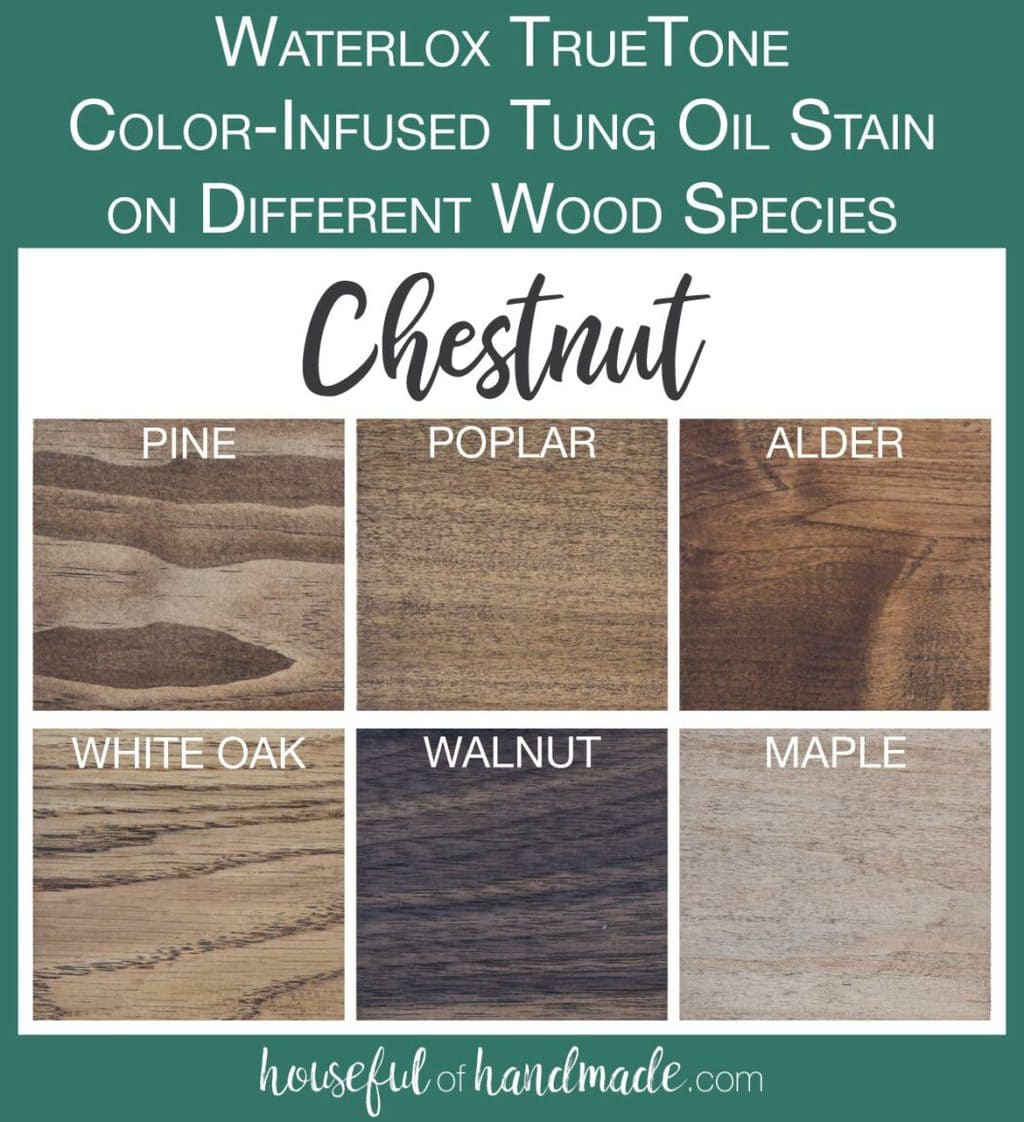
Ebony
Ebony is the darkest gray, almost black, stain. It has cool blue undertones to it and it was more prominent in the maple and pine.
The white oak took on a beautiful deep grain pattern and very rustic appearance. And the ebony really deepened up the walnut board.

Red Mahogany
Red Mahogany is a deep red with purple tones. The purple was more prominent in the pine and maple. On the maple it looks similar to a purple heart wood.
This was another color that surprised me when added to the walnut. The purply-red tone looks really pretty on the dark wood. It has a very exotic feel to it.
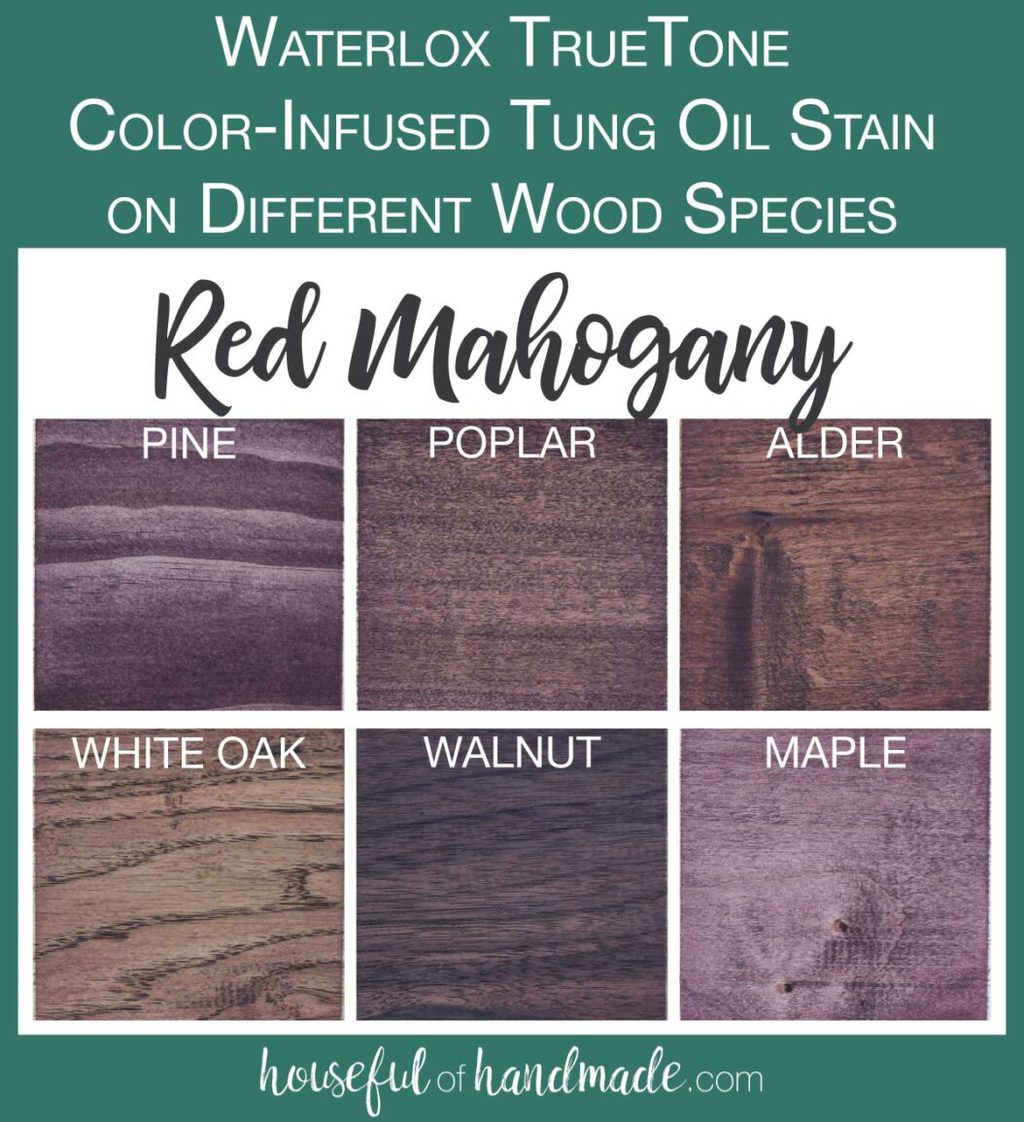
Tips for Performing your own Stain Test
This test is so useful if you plan to do a lot of woodworking projects. Having a swatch of the actual stain on the wood you plan to use will take the guess work out of finishing. No more stressing the finish will not come out how you planned.
But if you’ve ever tested a color on a scrap of wood, just to be disappointed when the actual finish looks different, these tips will ensure your next stain test is a success!
- Make sure to sand the piece of wood for the test the same way you will your finished project.
- Apply the color with the same type of applicator you plan to use on the finished piece.
- Add the finish to the stain to make sure the finish will not alter the color.
And with those three easy steps you will be set up for furniture finishing success!
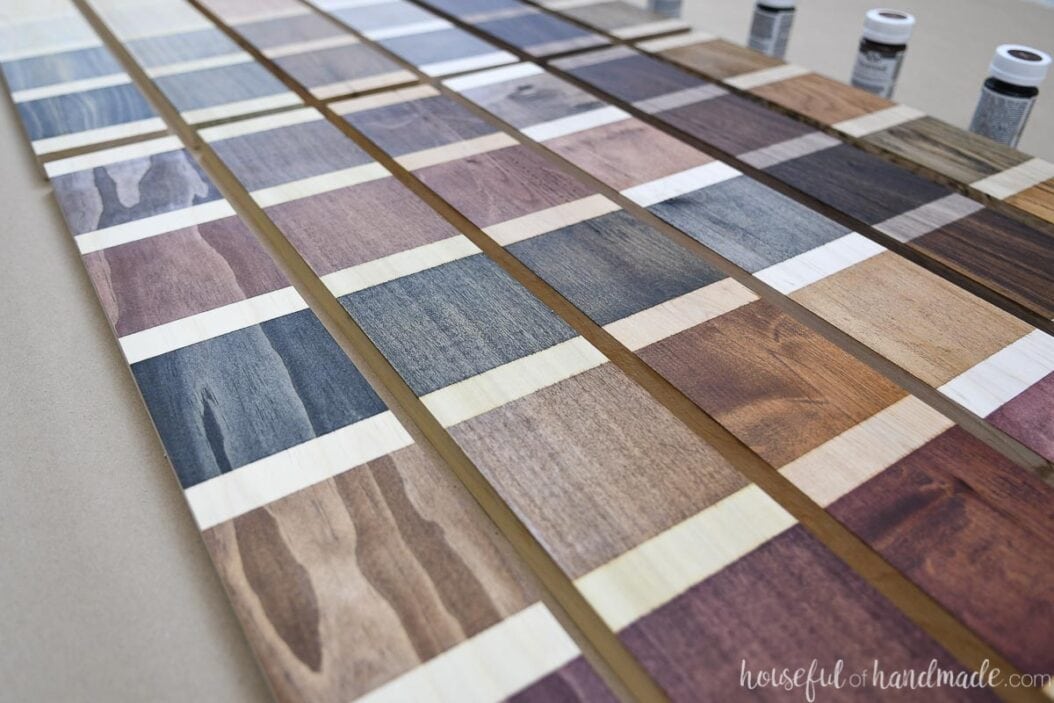
I hope this test was as fun for you as it was for me. It really opened my eyes up to new possibilities with my furniture builds. I cannot wait to use some of my new favorite wood/color combinations.
Happy Building!

Thank you to Waterlox for sponsoring this post. I only recommend products that I use and love and all opinions are 100% my own. Click here to read my full disclosure policy.

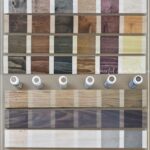


I am a newcomer to your site and my husband and I are first-time home buildiers @ ages 72 and 75!! We harvested and had milled pines from the lot we are building on and planning to use for kitchen countertops, bathroom vanity tops, shelving, etc.
I feel like I have hit the jackpot with your WONDERFUL site…so thorough and clear. Thank you for the excellent attention to detail you have given with your directions!
I look forward to using your directions and to receiving your other woodworking ideas to use up all this wood that has been cut and curing for about 2 years now!
Thank you so much!!
Marlit
Incredibly helpful and well done.
Wow thank you for these samples! Super helpful. So is this product food safe? It’s the same as the original Waterloo sealer just tinted? Thank you again
It is not the same as the origional Waterlox, this is a new Tung Oil product. You can use it with the original Waterlox sealer to color the wood or with their new sealers. It is non-toxic once cured.
I wish more bloggers would test these finishes on birch, especially because the DIY butcher block that both Home Depot and Lowes sells is birch. I don’t know enough about wood species to know if I could use one of these as a reference. Poplar and maple are the closest in color to birch, but I imagine they have different hardness, pores, and tannins. Otherwise, this post is really interesting.
Super helpful — thank you. I’ve been thinking about refinishing my wood kitchen counter and was wondering how Pickled White would look on walnut. It’s so hard to find finish samples on walnut!
I am so glad it helped! No one likes to stain walnut, but some of the color options are just amazing so I am glad I did. Good luck with your kitchen countertop refinishing!
Kati, you are amazing! I appreciate how thorough you were with this test. What a kindness to those of us who may be interested in using the product in the future. Thank you!
Thank you Sarah! It was fun to see all the different options and I love that it will be useful for others as well.